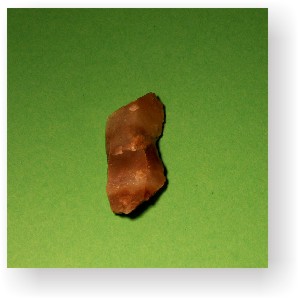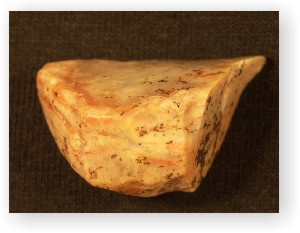Lanton Quarry
Mesolithic (10,000- 4000 BC)
The Mesolithic is the name given to the period after the end of the last Ice Age when Britain became inhabited by hunter-gatherer and fishing groups.
Mesolithic activity in the area was first confirmed by the fieldwalking over the site when several hundred stones tools were discovered. The types found include cores, scrapers, burins, knives, projectile points, blade tools and lots of waste flakes.
Tools like these would have been used in everyday tasks such as scraping animal hides, cutting up meat and making clothes. Food was obtained by hunting, gathering and fishing so people's diet included large amounts of protein from wild animals, fish and birds. The armatures on spears and arrows were made out of flint and chert. These made very effective weapons for hunting animals such as deer, wild pig and wild cattle.
So far the strip, map and sample at Lanton Quarry has not revealed any structures dating from this period. However, there is an example of a Mesolithic house that has been excavated in Northumberland. Not far from Lanton Quarry at the Maelmin Heritage Trail a reconstruction of a Mesolithic house, excavated at Howick on the Northumberland coast, can be visited free of charge any time of the year.
| Neolithic | Bronze Age | Medieval |



